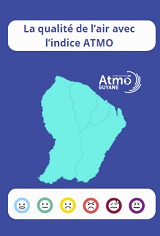Blada.com
jeudi 18 décembre
Boîtes aux lettres
Courrier des lecteurs
Petites annonces
Emploi / Formation
Covoiturage
Infos citoyennes
Infos citoyennes
12/09/23
ARS : Comment s’organisent les études de médecine
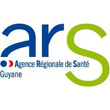 Cette rentrée universitaire est marquée par la création de la deuxième année de médecine en Guyane. Environ 80 % des cours seront assurés par des enseignants de Guyane. Les dix-neuf premiers étudiants ont effectué leur stage infirmier à l’hôpital de Cayenne durant les grandes vacances. Ils auront la possibilité d’effectuer leurs prochains stages dans les établissements du territoire. Pour le deuxième cycle, dont la quatrième année a été créée cette année, ils pourront effectuer leurs stages dans les services hospitaliers de Guyane, Martinique et Guadeloupe.
Cette rentrée universitaire est marquée par la création de la deuxième année de médecine en Guyane. Environ 80 % des cours seront assurés par des enseignants de Guyane. Les dix-neuf premiers étudiants ont effectué leur stage infirmier à l’hôpital de Cayenne durant les grandes vacances. Ils auront la possibilité d’effectuer leurs prochains stages dans les établissements du territoire. Pour le deuxième cycle, dont la quatrième année a été créée cette année, ils pourront effectuer leurs stages dans les services hospitaliers de Guyane, Martinique et Guadeloupe.

C’est parti pour les dix-neuf premiers étudiants de deuxième année de médecine en Guyane ! Lundi, une rentrée officielle a été organisée pour marquer l’événement. Ils ont été accueillis par le Pr Pierre Couppié, responsable du DFR santé (photo ci-contre), Laurent Linguet, président de l’université de Guyane, Dimitri Grygowski, directeur général de l’ARS, Gabriel Serville, président de la CTG, et le recteur Philippe Dulbecco. « Dès le mois de septembre, l’an dernier, nous les avions prévenus que nous travaillions fortement à la création d’une deuxième année ici en Guyane, que cette création figurait dans le rapport de mission IGAS-IGESR, se souvient le Pr Couppié. Toute l’année, nous les avons tenus informer de l’avancée du dossier. Le projet a été validé début juillet par le Conseil national de l’enseignement supérieur et de la recherche. » L’an prochain, ces mêmes dix-neuf étudiants entameront leur troisième année en Guyane et tâcheront de valider leur diplôme de formation générale en sciences médicales (DFGSM, équivalent au niveau licence).
La possibilité d’effectuer son premier cycle de médecine en Guyane et le deuxième cycle aux Antilles-Guyane est un bouleversement. L’objectif, à terme, est d’encourager les étudiants à entamer leur carrière professionnelle dans la région. En Guyane, les étudiants de première année (parcours d’accès spécifique santé ou PASS et la licence accès santé ou LAS) continuent de suivre des cours en grande partie proposés par les Antilles, via une plateforme numérique. Dès la deuxième année, « environ 80 % des cours » sont assurés par des enseignants en Guyane, précise le Pr Couppié. « Le reste sera réalisé par des collègues des Antilles, en visio ou très majoritairement lors de leurs venues en Guyane. » Il en sera de même en troisième année. Le programme est le même qu’aux Antilles, dont les enseignants ont partagé de nombreux documents à leurs confrères guyanais. « Au total, on mobilise environ quarante-cinq enseignants de Guyane pour assurer les cours. »
Les programmes de deuxième et troisièmes années se concentrent principalement sur l’examen du patient (sémiologie) et la physiopathologie. « En première année, les étudiants ont appris le fonctionnement normal des organes. Maintenant, ils apprennent les anomalies de fonctionnement, les examens cliniques, les signes anormaux… », illustre le Pr Couppié. La deuxième année marque également le début des stages dans les hôpitaux de Guyane. « Les étudiants de première année qui ont réussi médecine ont déjà effectué un stage infirmier durant les grandes vacances, à l’hôpital de Cayenne. Pour les prochains, il s’agit de stages d’une semaine dans les équipes médicales de différents services comme les urgences, la médecine, la pédiatrie… », détaille le responsable du DFR santé. Des examens clôtureront chacun des deux semestres.
Un objectif de 50 étudiants par an
Si cette première promotion compte 19 étudiants, l’objectif est d’arriver à une cinquantaine d’ici à cinq ans. « Beaucoup d’étudiants guyanais de très bon niveau partent en métropole. Quand ils verront que l’on peut s’engager dans des études de médecine sélectives sur le territoire, nous pensons qu’ils feront ce choix. »
D’ici-là, le nombre de professeurs des universités – praticiens hospitaliers (PU-PH) de Guyane devrait avoir plus que triplé. « Nous prévoyons d’ouvrir 30 postes hospitalo-universitaires supplémentaires d'ici à 2027, ce qui renforcera notre capacité à former de futurs médecins dans de bonnes conditions, a rappelé Dimitri Grygowski, directeur général de l’ARS, lundi devant les étudiants (…) Cette évolution majeure dans le domaine de la formation médicale est une étape importante pour la Guyane. Elle nous rapproche de la création de notre centre hospitalier régional universitaire (CHRU) et offre de nouvelles opportunités professionnelles » aux étudiants. De futurs praticiens, souvent originaires des territoires et qui y auront poursuivi la quasi-totalité de leurs études.
Un deuxième cycle sur les trois territoires
Outre l’ouverture de la deuxième année de médecine en Guyane, cette rentrée universitaire est marquée par une autre nouveauté : la création de la quatrième année de médecine aux Antilles-Guyane, la cinquième l’an prochain et la sixième dans deux ans. Les étudiants auront alors effectué l’intégralité de leur deuxième cycle aux Antilles-Guyane.
En pratique, les externes passent la moitié de leur temps en cours et la moitié en stage à l’hôpital. Ils ont la possibilité de les effectuer dans tous les services agréés pour accueillir des internes. Ils peuvent donc organiser leur externat à la carte, sur les trois territoires. Les billets d’avions sont pris en charge. En revanche, aucune décision n’a été prise pour le logement. Au cours de leur externat, les étudiants ont également l’obligation de réaliser un stage dans l’Hexagone, avec prise en charge des billets d’avion.
Parmi ces étudiants, cinq externes ont choisi la Guyane pour démarrer leur quatrième année. « Deux nous ont annoncé qu’elles passeront toute l’année en Guyane. Elles passeront donc leurs examens ici, en même temps que les Antilles », précise le Pr Pierre Couppié. Dans les prochaines années, le responsable du DFR santé espère accueillir davantage d’externes : « Nous pourrions monter jusqu’à 50 à 70. »
De nombreux enseignants de Guyane
Le dossier de demande de co-accréditation du diplôme de formation générale en sciences médicales (DFGSM) liste trente-trois enseignants en Guyane. Une liste non exhaustive et qui sera amenée à évoluer en fonction des mouvements des personnels. Les enseignants de Guyane dont les noms figurent dans la demande de co-accréditation sont les :
- Pr Pierre Couppié (PU-PH de dermatologie, autre spécialité infectiologie, CHC), Mathieu Nacher (PU-PH de santé-publique, CHC) Magalie Demar (PU-PH de parasitologie, CHC), Félix Djossou (PU-PH d’infectiologie, CHC), Loïc Epelboin (PU-PH d’infectiologie, autre spécialité médecine interne, CHC), Narcisse Elenga (PU-PH de pédiatrie, autre spécialité hématologie, CHC), Bertrand De Toffol (PU-PH de neurologie, autre spécialité psychiatrie, CHC), Hatem Kallel (PU-PH de réanimation, CHC), Magalie Zappa (PU-PH de radiologie, CHC), Antoine Adenis (PU-PH de santé publique, autre spécialité médecine générale, CHC), Nadia Sabbah (PU-PH d’endocrinologie, CHC), Maylis Douine (PU-PH de santé publique, autre spécialité médecine générale, CHC), Jean-Marc Pujo (Pr associé de médecine d’urgence, CHC), Christophe Peyrefitte (virologie, Institut Pasteur de Cayenne), Ghislaine Prévot (PU biologie), Vincent Ravery (ancien PU-PH d’urologie, CHK).
- Dr Romain Blaizot (MCU-PH de dermatologie, CHC), Gérard Py (chef de service d’orthopédie, ancien chef de clinique, CHK), Najeh Hcini (chef de service de gynécologie-obstétrique, pré-CNU, Chog), Mohamed Kinan Drak Alsibai (chef de service d’anatomo-pathologie, pré-CNU, CHC), Vincent Sainte-Rose (biologie, bactériologie, ancien AHU, CHC), Dominique Louvel (chef de service de gastro-entérologie, ancien CCA, CHC), Hakim Amroun (chef de service, chirurgie digestive, CHC), Tanguy Gbaguidi (chef de service, néphrologie, CHC), Flaubert Nkontcho (chef de service, pharmacien, CHC), Yves-Kénol Franck, (chef de service, cardiologie, CHC), Houari Aissaoui (pneumologie, CHC), Cyrille Mathien (cardiologie, ancien CCA), Max Gérard (ophtalmologie, ancien CCA), Ahmed Mulla (MCF anglais), Fabrice Quet (épidémiologie, informatique, CHC), Guillaume Icher (MCF associé, pharmacie), Marc-Alexandre Tareau (anthropologue, CHC).
 This academic year is marked by the creation of the second year of medicine in Guyana. Around 80% of the courses will be taught by teachers from Guyana. The first nineteen students completed their nursing internship at the Cayenne hospital during the summer holidays. They will have the opportunity to carry out their next internships in local establishments. For the second cycle, the fourth year of which was created this year, they will be able to carry out their internships in the hospital services of Guyana, Martinique and Guadeloupe.
This academic year is marked by the creation of the second year of medicine in Guyana. Around 80% of the courses will be taught by teachers from Guyana. The first nineteen students completed their nursing internship at the Cayenne hospital during the summer holidays. They will have the opportunity to carry out their next internships in local establishments. For the second cycle, the fourth year of which was created this year, they will be able to carry out their internships in the hospital services of Guyana, Martinique and Guadeloupe.

Here we go for the first nineteen second-year medical students in Guyana! On Monday, an official return to school was organized to mark the event. They were welcomed by Professor Pierre Couppié, head of the DFR health(photo opposite),Laurent Linguet, president of the University of Guyana, Dimitri Grygowski, director general of the ARS, Gabriel Serville, president of the CTG, and rector Philippe Dulbecco. “As early as September, last year, we warned them that we were working hard on the creation of a second year here in Guyana, that this creation appeared inthe IGAS-IGESR mission report, se remembers Professor Couppié. All year long, we kept them informed of the progress of the file. The project was validated at the beginning of July by the National Council for Higher Education and Research. Next year, these same nineteen students will begin their third year in Guyana and will try to validate their general education diploma in medical sciences (DFGSM, equivalent to the license level).
The possibility of doing your first cycle of medicine in Guyana and the second cycle in the Antilles-Guyana is an upheaval. The ultimate objective is to encourage students to begin their professional careers in the region. In Guyana, first-year students (specific health access course or PASS and health access license or LAS) continue to follow courses largely offered by the Antilles, via a digital platform. From the second year, “around 80% of the courses” are provided by teachers in Guyana, specifies Professor Couppié. “The rest will be carried out by colleagues from the Antilles, by video or mostly during their visits to Guyana.” It will be the same in the third year. The program is the same as in the Antilles, whose teachers have shared numerous documents with their Guyanese colleagues. “In total, we mobilize around forty-five teachers from Guyana to provide the courses.”
The second and third year programs mainly focus on patient examination (semiology) and pathophysiology. “In the first year, students learned about the normal functioning of organs. Now, they learn about operating anomalies, clinical examinations, abnormal signs…,” illustrates Professor Couppié. The second year also marks the start of internships in hospitals in Guyana. “The first year students who passed medicine have already completed a nursing internship during the summer holidays, at the Cayenne hospital. For the next ones, these will be one-week internships in the medical teams of different departments such as emergencies, medicine, pediatrics, etc.,” explains the head of the DFR health. Exams will close each of the two semesters.
A goal of 50 students per year
If this first class has 19 students, the goal is to reach around fifty within five years. “Many Guyanese students of very good level go to mainland France. When they see that we can engage in selective medical studies in the territory, we think they will make this choice. »
By then, the number of university professors – hospital practitioners (PU-PH) in Guyana should have more than tripled. “We plan to open 30 additional university hospital positions by 2027, which will strengthen our capacity to train future doctors in good conditions,” recalled Dimitri Grygowski, director general of the ARS, Monday in front of the students (…) This major development in the field of medical training is an important step for Guyana. It brings us closer to the creation of our regional university hospital center (CHRU) and offers new professional opportunities.” to students. Future practitioners, often from the territories and who will have pursued almost all of their studies there.
A second cycle in the three territories
In addition to the opening of the second year of medicine in Guyana, this academic year is marked by another novelty: the creation of the fourth year of medicine in the Antilles-Guyana, the fifth next year and sixth in two years. The students will then have completed their entire second cycle in the Antilles-Guyana.
In practice, externs spend half their time in classes and half on internship at the hospital. They have the possibility of carrying them out in all the services approved to accommodate interns. They can therefore organize their day school à la carte, across the three territories. Plane tickets are covered. However, no decision has been made for housing. During their externship, students are also required to complete an internship in France, with plane tickets covered.
Among these students, five external students chose Guyana to start their fourth year. “Two told us that they will spend the whole year in Guyana. They will therefore take their exams here, at the same time as the Antilles,” specifies Professor Pierre Couppié. In the coming years, the head of the DFR health hopes to welcome more external students: “We could go up to 50 to 70.”
Many teachers in Guyana
The application file for co-accreditation of the general training diploma in medical sciences (DFGSM) lists thirty-three teachers in Guyana. A non-exhaustive list which will evolve depending on staff movements. The teachers from Guyana whose names appear in the co-accreditation application are:
- Pr Pierre Couppié (PU-PH of dermatology, other infectious disease specialty, CHC), Mathieu Nacher (PU-PH of public health, CHC) Magalie Demar (PU-PH of parasitology, CHC), Félix Djossou (PU- PH of infectious diseases, CHC), Loïc Epelboin (PU-PH of infectious diseases, other internal medicine specialty, CHC), Narcisse Elenga (PU-PH of pediatrics, other hematology specialty, CHC), Bertrand De Toffol (PU-PH of neurology, other psychiatry specialty, CHC), Hatem Kallel (PU-PH in intensive care, CHC), Magalie Zappa (PU-PH in radiology, CHC), Antoine Adenis (PU-PH in public health, other general medicine specialty, CHC) , Nadia Sabbah (PU-PH of endocrinology, CHC), Maylis Douine (PU-PH of public health, other general medicine specialty, CHC), Jean-Marc Pujo (Associate professor of emergency medicine, CHC), Christophe Peyrefitte (virology, Institut Pasteur de Cayenne), Ghislaine Prévot (PU biology), Vincent Ravery (former PU-PH urology, CHK).
- Dr Romain Blaizot (MCU-PH of dermatology, CHC), Gérard Py (head of the orthopedics department, former head of clinic, CHK), Najeh Hcini (head of the gynecology-obstetrics department, pre-CNU, Chog ), Mohamed Kinan Drak Alsibai (head of the anatomical pathology department, pre-CNU, CHC), Vincent Sainte-Rose (biology, bacteriology, former AHU, CHC), Dominique Louvel (head of the gastroenterology department, former CCA, CHC), Hakim Amroun (head of department, digestive surgery, CHC), Tanguy Gbaguidi (head of department, nephrology, CHC), Flaubert Nkontcho (head of department, pharmacist, CHC), Yves-Kénol Franck, (head of department, cardiology, CHC), Houari Aissaoui (pulmonology, CHC), Cyrille Mathien (cardiology, former CCA), Max Gérard (ophthalmology, former CCA), Ahmed Mulla (English MCF), Fabrice Quet (epidemiology, computer science, CHC), Guillaume Icher (associate MCF, pharmacy), Marc-Alexandre Tareau (anthropologist, CHC).
Raccourcis

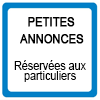
passer une petite annonce

passer une annonce de covoiturage


passer une annonce d’emploi

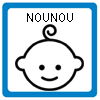
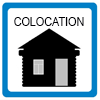
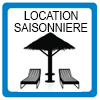

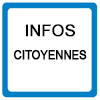
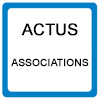
associations, postez vos actualités

participez au courrier des lecteurs
La Guyane c’est ici
La qualité de l’Air avec
ATMO
Photothèque

Lancements 2022
Vol 259 Ariane 5



